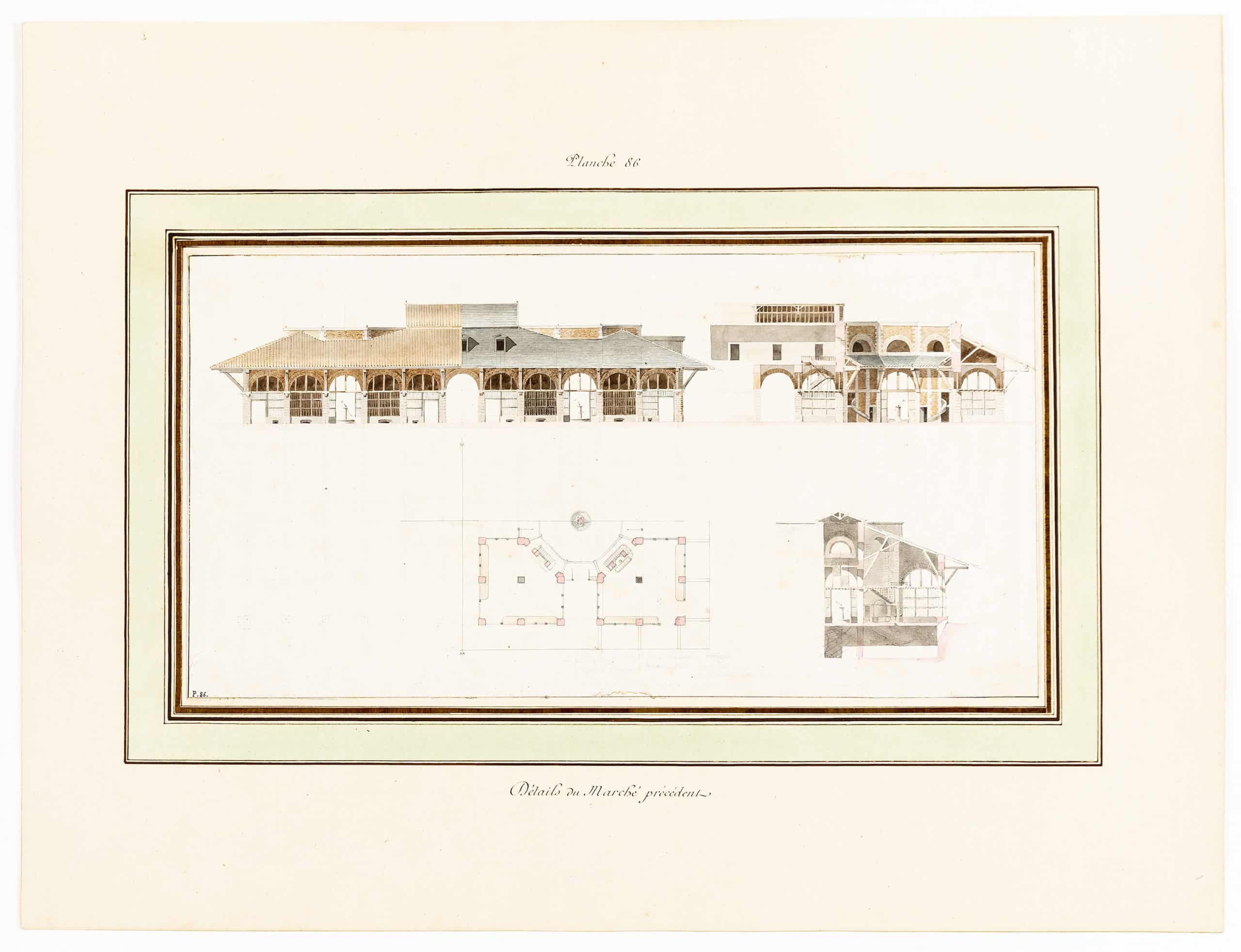Fontaine: Market Stalls


The following text is an excerpt from a conference paper given by Basile Baudez as part of the Rencontres du Centre André Chastel, Paris, May 2016. The ‘History of Colour in Architectural Drawing, 16th–19th Centuries’ is part of a forthcoming book.
Architectural historians have focused on the history of drawing as one of project design tools. By applying the methods of art history, one can trace colour as a key player in the long history of rivalry and exchange between European traditions in architectural drawing and practice. While Italian Renaissance drawings were largely monochrome and developed their conventions under pressure from engravers, the seventeenth-century European situation is characterised by a contrast between a colourful German and Dutch world around architect-painters’ designs and a still largely monochrome tradition in Italy and England. At the end of Louis XIV’s reign, French architects adopted a series of colour conventions taken from the engineers, largely for informational purposes. In the middle of the eighteenth century, however, a colour revolution took place, one in which a new generation of architects who were working alongside painters developed a wide chromatic range that was no longer limited to informing the worker but to persuading academic juries and gain commissions. This eighteenth-century French employment of colour laid the foundation for Beaux-Arts architectural drawings in the first half of the nineteenth century, at a moment when English architectural drawings, too, adopted colour in response to the English watercolour movement.

– Basile Baudez